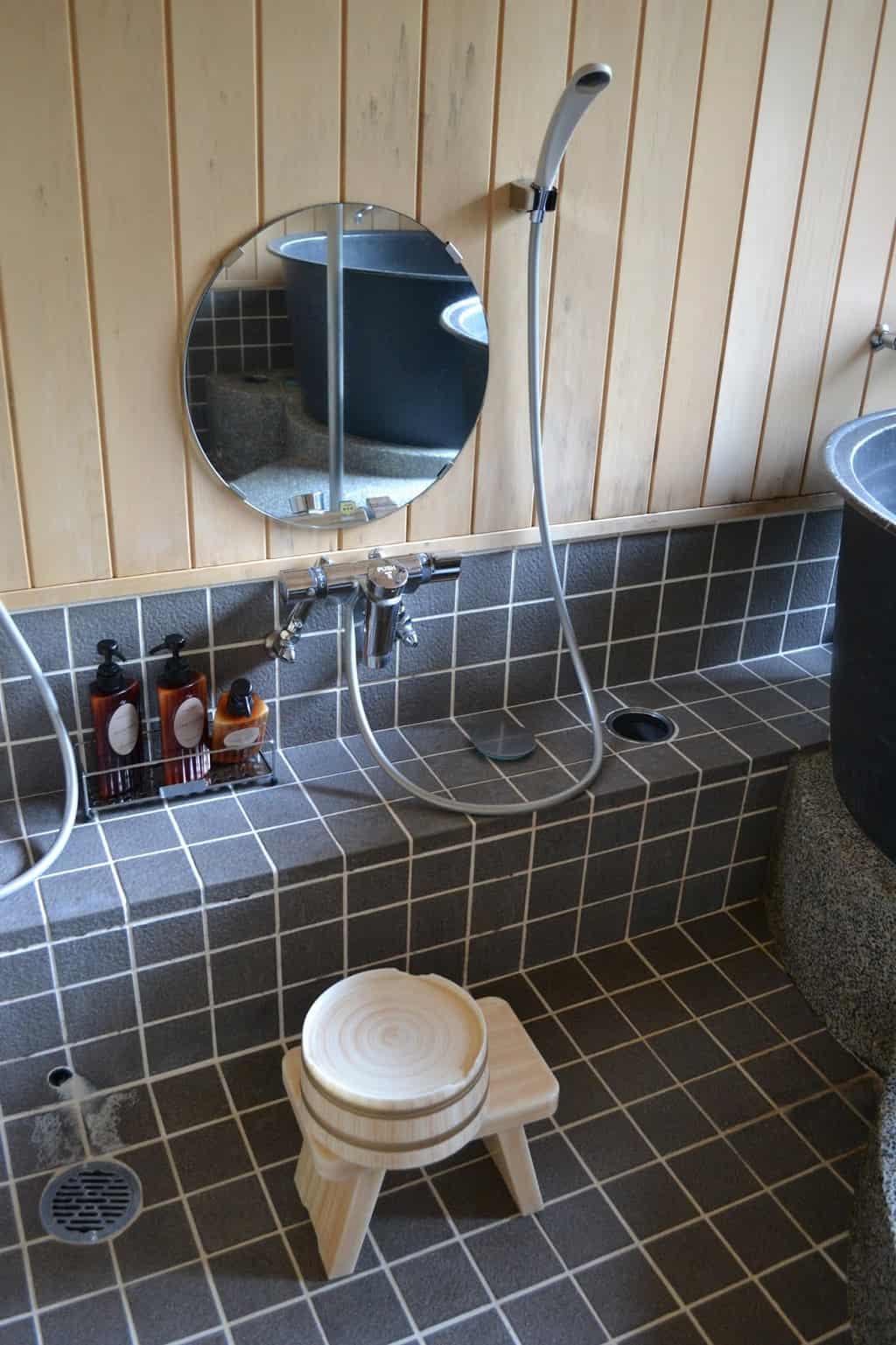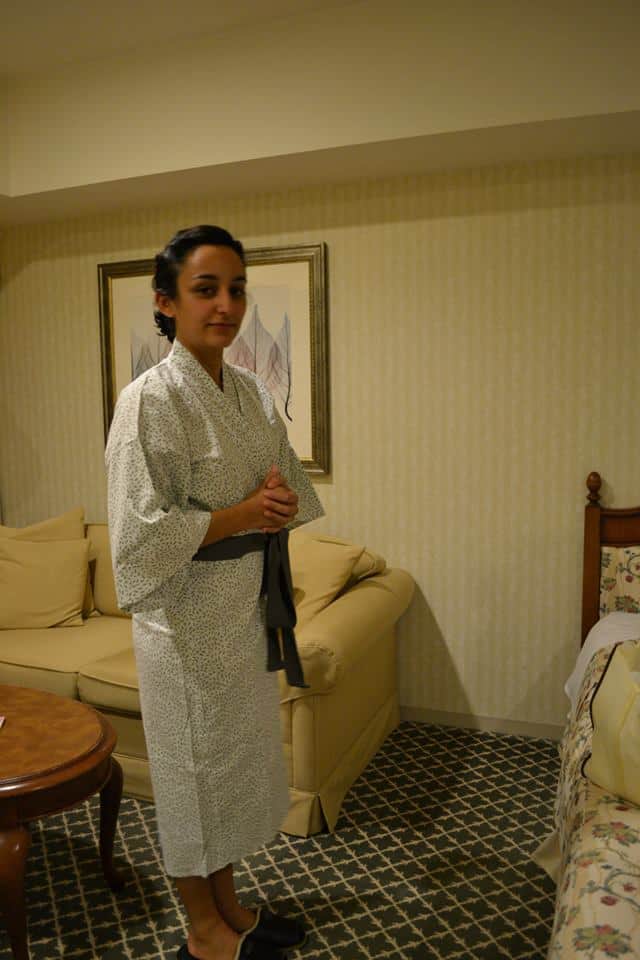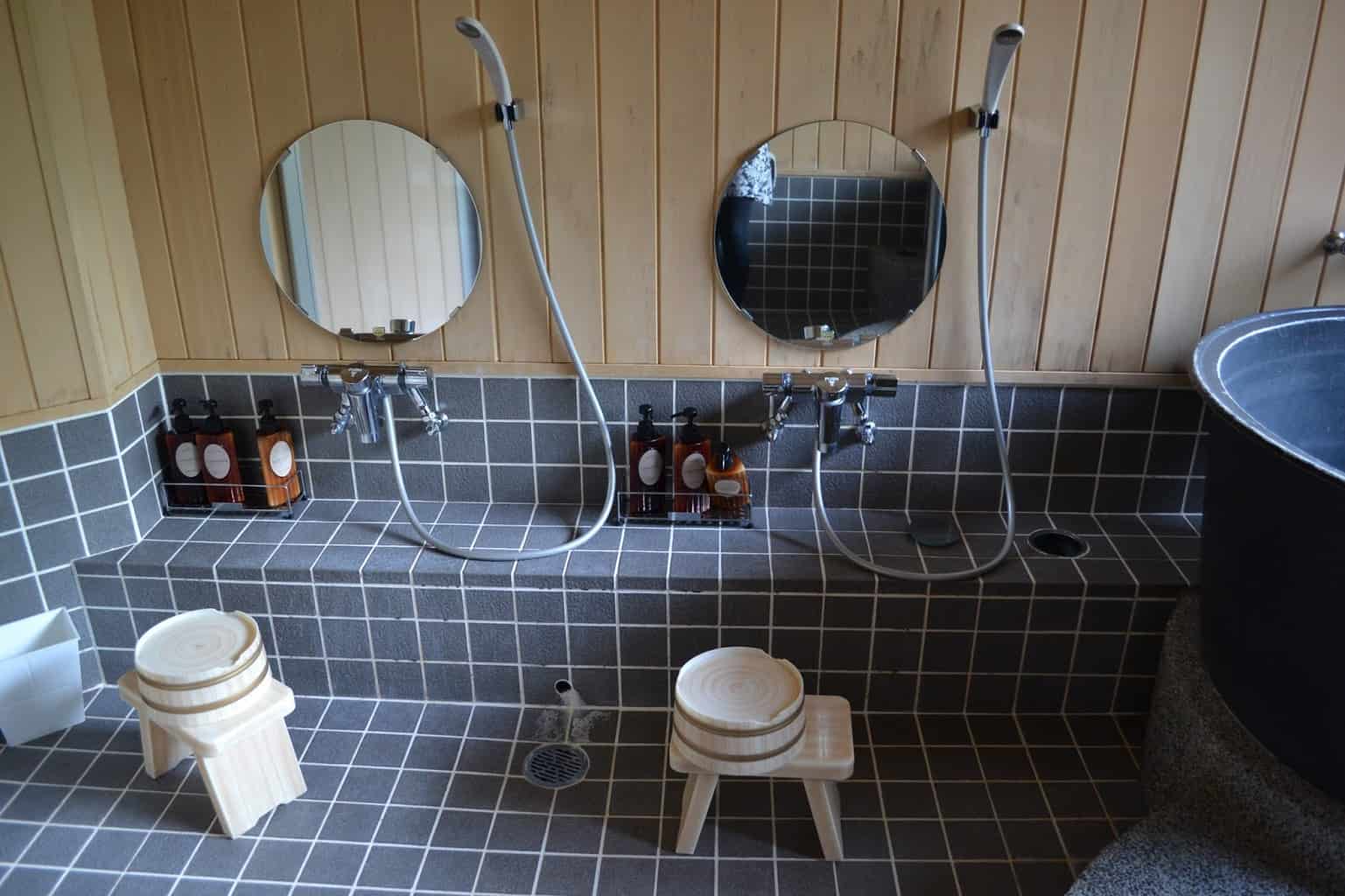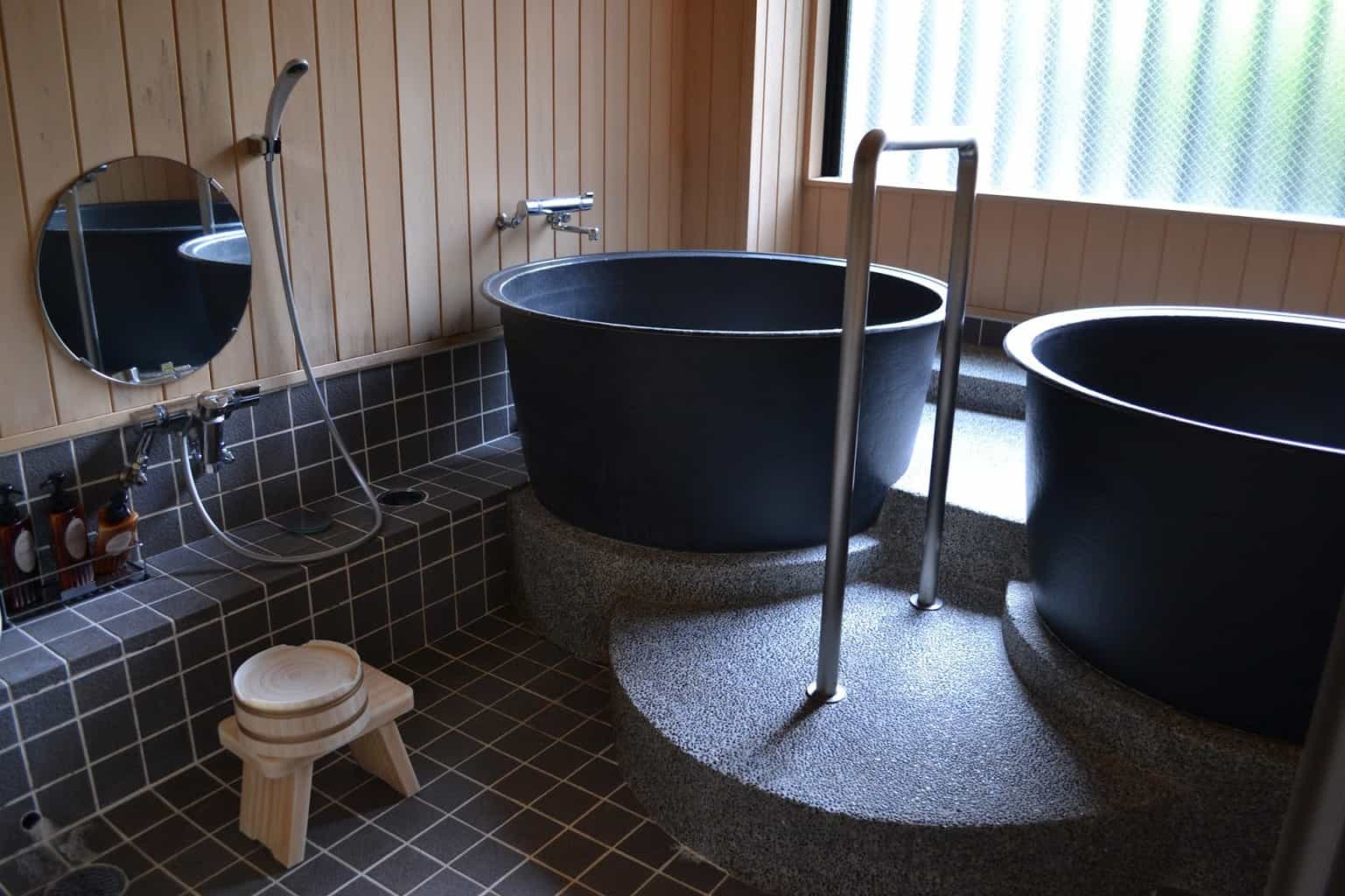Last Updated on July 27, 2018 by Leyla Kazim
If you’re due to visit Japan, you will notice a lot of things. A lot of fascinating, unfamiliar and sometimes strange things.
Chairs on trains swivel 180 degrees so as to always face the direction of travel. The doors to taxis close automatically. You can smoke inside many restaurants, but only in designated areas on the street. Toilets are more advanced than the International Space Station, with buttons for things you didn’t even realise were desirable toilet features, and there is absolutely and equivocally no tipping in Japan.
People openly read violent manga pornography in public, often involving giant tentacles, and no one will bat an eyelid. Shop and restaurant staff will shout the “Irrashimase!” welcome when you enter their premises. It’s acceptable to get obliterated on a Friday night, puke up on your boss’s shoes, pass out on street corner, and turn up for work on Monday morning with no judgement passed. But it’s frowned upon to be seen eating while you walk.
Oh yes, and bathing is traditionally done in communal baths, in the complete buff.
It’s a fascinating quirk of the isolated evolution of the Japanese culture, when you think about it. Outside on the street, you’ll be hard pressed to engage in much eye contact thanks to the mostly coy demeanour of the Japanese. But bump into that person in the onsen of your hotel room and they’ll happily strip off and sit in a bath with you.
The Japanese tradition of bathing with others in your birthday suit often causes a state of alarm for westerners. Particularly for the British, with our stiff upper lips and aversion to nakedness in general. Most of us can just about handle a doctor asking us to drop our pants for the sake of our wellbeing. I myself am that person that will hide my modesties behind a precarious towel wrap as I try to shuffle on some underwear in public changing rooms.
But let me tell you, when it comes to being in Japan and embracing their culture, my advice is to leave your anxieties and insecurities about this arrangement at the arrival gate. Because doing so may well be one of the most liberating and fun things you do during your trip.
Here’s a little guide to help you get Japanese bathing right, and enjoy it.
1) What’s the history behind the onsen?

Traditionally they were located outdoors, but a large number of properties have harnessed these waters and brought them inside to provide the facilities under cover. They are believed to have healing properties, thanks to the multitude of minerals that can be found in them.
2) Why is bathing in them such a popular pastime?
As well as all those minerals, the purpose of wallowing in these warm waters is to provide an escape from the stresses and strains of everyday life and embrace the virtues of hadaka no tsukiai (naked communion). It allows people to get to know eachother in an environment where there can be no barriers.
While finding yourself naked in front of your boss is the stuff most nightmares are made of, it’s not uncommon for company groups to visit onsens en masse, as well as friends, and families.
In the past, men and women bathed together and everyone was fine with it. But since Japan opened its doors to the west, gender separation has been enforced and is strictly adhered to. The traditional mixed bathing does still persist in some rural parts of the country, however.
3) Ok, I’m up for it. How do I do this properly?
The sequence of events to enjoy an onsen is as follows:
- If you are in a hotel, it’s common for guests to be provided with an onsen towel and yukata (casual kimono – like a nice thin dressing gown) which you can wear from the onsen to your room. If you prefer, you can remove your clothes in your room, slip into the yukata, and walk to the onsen wearing it with nothing underneath. It is completely normal to be seen walking around in these within the hotel grounds. Don’t forget to take the yukata and towel to the onsen with you.
- When you arrive, remove your shoes before you enter the tatami mat area – there’s usually compartments to put them in. Go into the relevant changing room (male or female) and remove all your clothes (or your yukata). There will usually be lockers or woven baskets to place them in.
 |
| In a yukata read for the onsen |
- Somewhere in the onsen or provided in your room, there will be a washcloth for you to take to the shower area. This can be used to cover your modesties as you walk around the onsen. Or strut like a peacock, either is fine.
- On entering, you’ll see a number of showering posts, often in rows, which usually consist of a mirror, a stool to sit on, a shower hose or tap, and a bucket. Take a seat and wash yourself thoroughly with the washcloth. Soap and shampoo are often provided, particularly in the nicer hotels, or you can take along your own. The idea is to conserve water, so don’t leave the hose running. You can fill up the bucket and chuck the water over you, rather than use the hose. Once you’re clean, rinse the area and put everything back in it’s place for the next person to use.
- Only at this point, are you permitted to enter the hot onsen waters. These waters must not be contaminated with anything other than your squeaky clean self, so do not allow your washcloth to touch the water. Either leave it on the side, or fold it and balance it on your head like the natives. Similarly, if you haven’t washed your hair at the shower stage, you shouldn’t submerge your head.
- It’s not a swimming pool, so don’t start doing laps. The idea is to soak and relax and enjoy its cathartic properties. In big hotels, there might be different areas with different temperatures, so feel free to move from one to the next.
- If you get out to cool yourself down, be sure to rinse yourself at the shower stations again before you get back in.
- When you’re done, walk back to the changing room, dry yourself off with the towel, slip on your yukata, and walk back to your hotel room.
- If you’re visiting an onsen that is not in a hotel, the process is very much the same. Rather than going back to your room to get dressed, you will do so in the changing rooms.
You’ve now taken your first Japanese onsen in the nud – congratulations.
4) So who’s going to see me naked?
Firstly, only your own sex. Onsen baths and changing rooms are single sex. But in all honesty, likely very few people if anyone will see you naked. No one is there to look at anyone else, and everyone keeps themselves to themselves.
Also, if you use the washcloth (which when fully unfolded will be a decent size) to cover your bits as you walk about, it’s likely no one will catch a glimpse of anything. And once you’re in the water, nothing is visible anyway.
5) Can I just not be naked, and go in with a bikini / shorts?
No, you can’t. Swimming costumes are strictly forbidden as they are seen to contaminate the water. If you walked in with a swimming costume, everyone would stare at you as it’s just not permitted. I’ve heard of the odd place allowing costumes where they permit both sexes to use the same onsen. But these are usually more water-park themed and uncommon.
6) I’d like to experience it with my partner, is this possible?
If you’re of different sexes, the short answer is likely no. You will both need to visit your respective onsens separately, unless it’s those theme park type ones I mentioned above.
There are some places that might allow the onsen to be locked and enjoyed privately, and in this case both sexes could enjoy it at once. For example, Hotel Mizuhasou on the island of Miyajima had a couple of onsen rooms with two showers and two tubs in each (pictured), and a lock on the doors to allow this. The only problem here is queues would form outside, waiting for you to finish, which is far from relaxing.
7) What if I don’t want to shower in the onsen, will my room still have a bathroom?
Large hotels that cater to westerners will usually have rooms with private normal bathrooms, and also a large onsen to use if you wish to. Smaller hotels will sometimes have two types of rooms for sale – western ones with private bathrooms, or traditional tatami rooms perhaps with a private toilet but not a private bathroom. Ironically, it’s often the latter, without the private bathroom, that are more expensive.
Some very traditional ryokans won’t have any private bathrooms available and will only have an onsen to get yourself clean in. This was the case with the hotel mentioned above. Don’t be put off by this set up. If you just want a quick shower without the soaking, it’s very easy to pop in, have a wash and leave without barely being noticed at all. Like I said, no one is looking anyway.
8) What should I expect when I go in?
Based on my own experience, a glaring observation I made was the lack of westerners in the hotel onsens. I suspect many get put off by the idea, which is a great shame. Don’t be surprised to see people really going for it at the shower stage, getting into every nook and cranny. The Japanese take down their toothbrushes and even their razors.
9) Are there particular times of day where the onsens are less busy?
If you’re really conscious about the naked part and want to minimise the number of people who might see you, certain times of day are more quiet than others. Mornings either before or after breakfast, and evenings before or after dinner will busy – basically the times of day it’s most common to have a shower. I suspect the middle of the day will be the most quiet.
Onsens tend to have opening and closing times, they won’t be open 24 hours a day. In addition, some places might only have one onsen that alternates between male and female use for a certain number of hours each during the day. So check the times first and figure out when you might want to go.
10) What sort of people use the onsens?
Everyone. There were mothers with babies. Old ladies. Young women. People on their own or with a friend. My partner reported the same – business men, young men, elderly gentlemen, dads with sons. All shapes and sizes, all ages, all completely at ease with the whole situation. It’s a fantastic environment to be in.
11) What sizes do onsens come in?
This can vary considerably. For example, Hotel Associa in Takayama had a spectacular open air but covered onsen area, on multiple floors, overlooking the mountains. There were many shower stations and a number of pools to dip into, each with different temperatures, as well as waterfalls and jacuzzi tubs. There was a huge amount of space which made it very easy to find your own corner away from everyone else.
At the other end of the scale, an onsen may consist of a small room with just a handful of shower stations and one or two small tubs. This may initially feel awkward, but again, no one is looking at you and anyone else there has the same agenda as you – to just relax. If it is only the two of you in a tub, just go with it. It will be fine.
Anymore than two in a small tub and it might be a little too close for comfort. What usually happens in this situation is whoever has been in the longest will kindly bow out of the scene once a new person has entered and showered, to allow them to take a dip in their place.
 |
| Onsen view in Hotel Associa in Takayama, photo from their website |
12) I want to take pictures in the onsen, can I take a camera in?
Err.. no. I’m not sure that would go down too well with all the naked people that would be in your shots. The pictures I’ve used in this post were taken in the lockable onsen, and before it was open anyway.
We sometimes forget it’s possible to enjoy an experience without having to take a picture of it and post it online. This is a perfect opportunity to reacquaint yourself with this ancient notion.
13) Any tips for enjoying the experience?
Do take a bottle of water down with you. Onsens can be quite hot and it’s probably easy to overheat. When you get out you’ll need a cool drink, some places will have a water cooler.
If there are certain shower gels and shampoos that you use, it’s fine to take these down and leave them on the side once you’ve showered, while you take a dip in the waters.
Otherwise, there’s really nothing else to it.
I hope this guide has helped dispel any qualms you may have about the traditional Japanese bathing experience. If you’re due to visit this spectacular country, I highly recommend kicking off your knickers and getting involved – I bet you’ll leave feeling rejuvenated in both body and soul.
Check out www.japan-experience.com for all your Japan travel related needs, from rail passes and car rental, to hotel booking and tours.
Related posts:
10 things to eat in Tokyo
Tsukiji Fish Market tuna auction – 10 FAQ’s answered
Japanese Tea Ceremony in Kyoto


Well-written piece with great explanations on what to expect. As a foreigner living in China for 20-something years now, I visit Japan (pre-covid) a couple of times a year and absolutely love Onsens. As I am often at Onsens near ski resorts they are often full of other tourists who unfortunately don’t observe the proper etiquette. I feel ashamed seeing fellow foreigners completely disregarding local customs, not showering first, bringing their washcloths into the onsen waters, speaking loudly, and even drinking beer while soaking. I cringe every time. Sometimes Onsens will post the rules outside the entryway but they are often ignored. From what I’ve seen the culprits are usually Australians or Americans so I do hope your article gets widely circulated in those two countries.
One thing you didn’t mention is the difference between Onsens and Sento. Sometimes people will mistake Sento for Onsens so they should know to look out for the word Onsen if that is what they want. Don’t assume the bathing area is an Onsen. Please see this explanation from japankuru.com: The major difference between onsen and sento is the water that flows into the tubs. In fact, while referring to a place as a “sento” doesn’t tell you much about the water quality used at the bathhouse, the term “onsen” is actually restricted by Japanese law. That’s because sento baths, though they may be luxurious, are generally filled with heated tap water, while an onsen is a natural hot spring.
Author
Thank you for your detailed and thoughtful comment Bob! Yes I totally agree, it’s very cringe when seeing visitors not respect local customers, whatever the situation. Oh I did not know that difference between Onsens and Sentos – thank you for sharing!
Spa World in Osaka is a definite must go. Every night if you can. It's open 24 hours.
Nice summary. I had a nice solo onsen experience, which got very awkward for me once I was joined by another man. That was 8 years ago, and I would like to think I am a little more mature and less reserved and would enjoy the experience more if I tried again.
Thanks Greg. Yes I think it's natural to feel a little awkward on the first experience. Best to just go with the flow 🙂